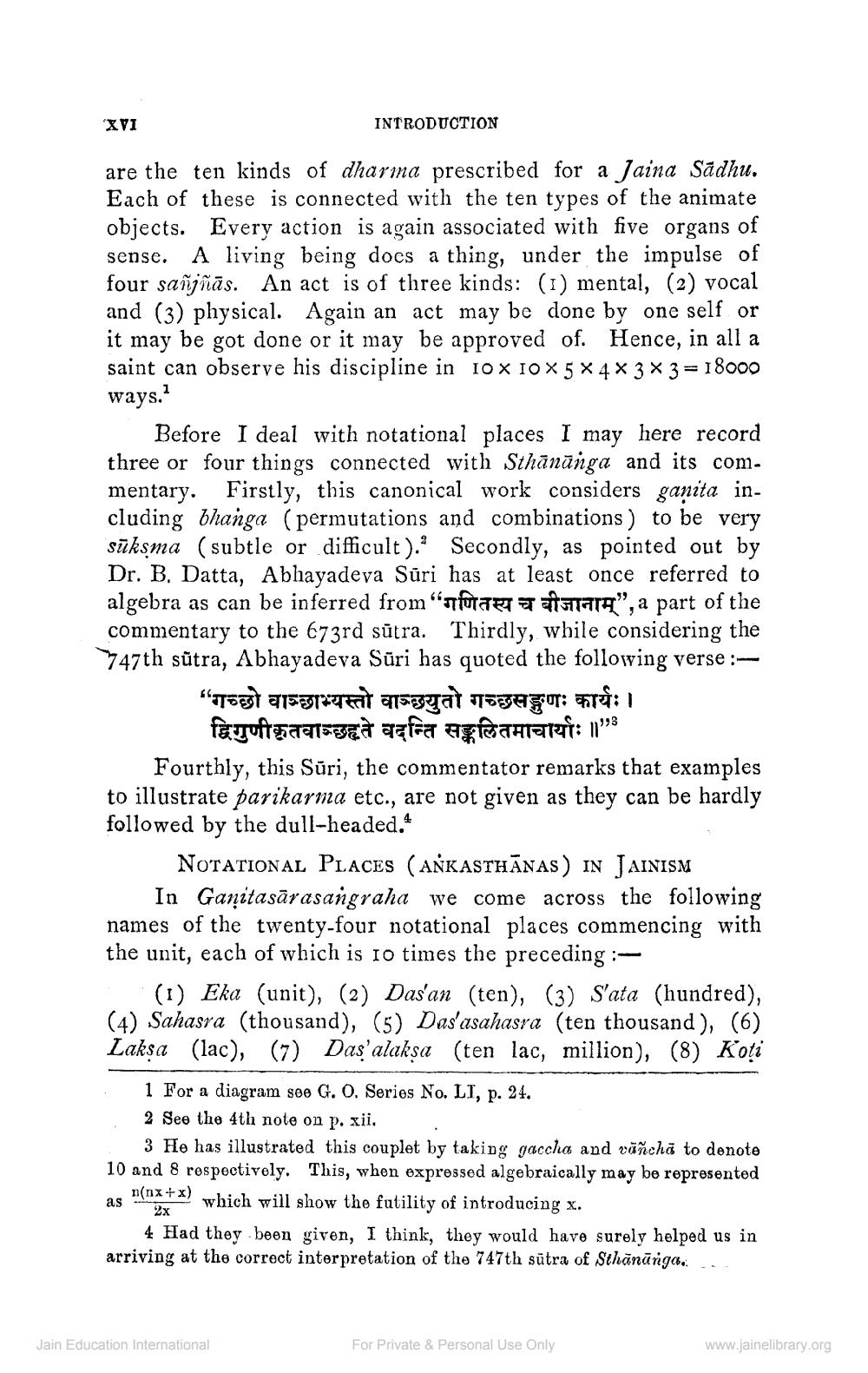________________
XVI
are the ten kinds of dharma prescribed for a Jaina Sadhu. Each of these is connected with the ten types of the animate objects. Every action is again associated with five organs of sense. A living being docs a thing, under the impulse of four sanjñās. An act is of three kinds: (1) mental, (2) vocal and (3) physical. Again an act may be done by one self or it may be got done or it may be approved of. Hence, in all a saint can observe his discipline in 10x 10× 5 × 4× 3 × 3 = 18000 ways.1
INTRODUCTION
Before I deal with notational places I may here record three or four things connected with Sthānanga and its commentary. Firstly, this canonical work considers ganita including bhanga (permutations and combinations) to be very sūkṣma (subtle or difficult). Secondly, as pointed out by Dr. B. Datta, Abhayadeva Süri has at least once referred to algebra as can be inferred from "गणितस्य च बीजानाम्”, a part of the commentary to the 673rd sutra. Thirdly, while considering the 747th sutra, Abhayadeva Sūri has quoted the following verse :“गच्छो वाञ्छाभ्यस्तो वाञ्छयुतो गच्छसङ्गुणः कार्यः । fayuftgazza azfa agfdsamanat: 11”3
Fourthly, this Suri, the commentator remarks that examples to illustrate parikarma etc., are not given as they can be hardly followed by the dull-headed.*
NOTATIONAL PLACES (ANKASTHANAS) IN JAINISM
In Ganitasarasangraha we come across the following names of the twenty-four notational places commencing with the unit, each of which is 10 times the preceding :
*
(1) Eka (unit), (2) Das'an (ten), (3) S'ata (hundred), (4) Sahasra (thousand), (5) Das'asahasra (ten thousand), (6) Lakṣa (lac), (7) Das'alakṣa (ten lac, million), (8) Koti
as
1 For a diagram see G. O. Series No. LI, p. 24.
2 See the 4th note on p. xii.
3 He has illustrated this couplet by taking gaccha and väñcha to denote 10 and 8 respectively. This, when expressed algebraically may be represented n(nx+x) which will show the futility of introducing x. 2x
4 Had they been given, I think, they would have surely helped us in arriving at the correct interpretation of the 747th sutra of Sthānānga.
Jain Education International
For Private & Personal Use Only
www.jainelibrary.org




